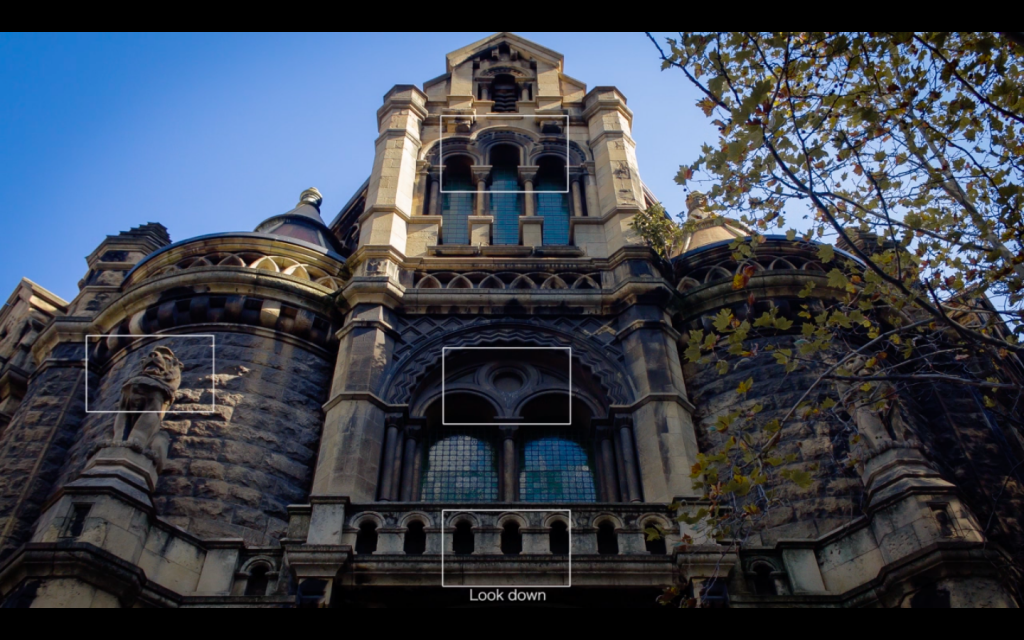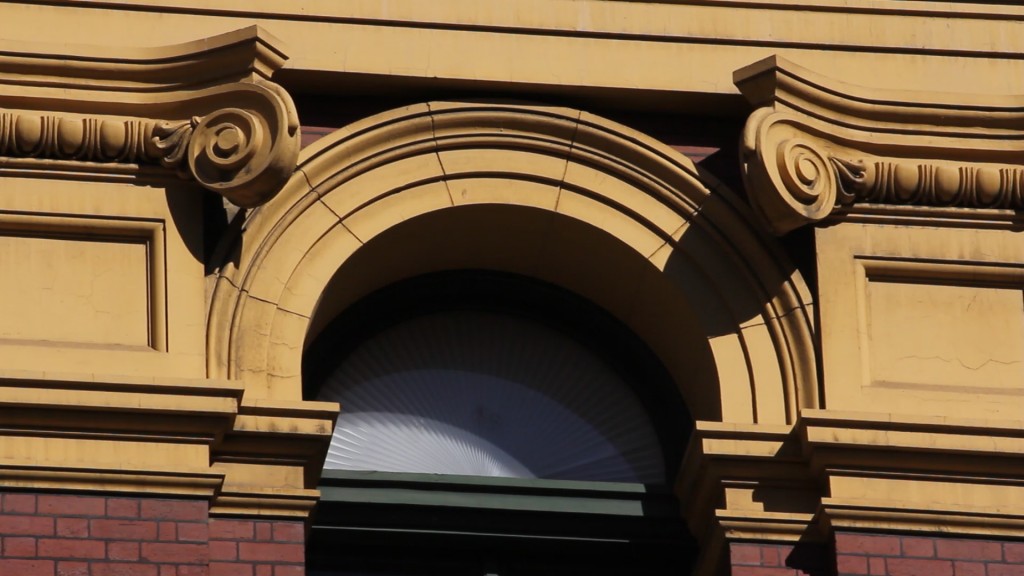Shaped By Time by Anita Ganju, Thomas Hatchman, Alan Chiew, and Jake Baldwin
Download via Dropbox link (FTP server unavailable from University network)
https://www.dropbox.com/sh/0aum3ejqy5ay481/AABCHWqat4UeWHQj4IUaMJ8la
Critical Statement
This Korsakow film is a conceptually driven piece, which aims to explore the human experience of the aging process. Shaped by Time uses mini-narratives that follow unidentified characters to portray a fatalistic attitude that, with age, people are gradually confined into their lives – socially, physically and structurally. The film adopts elements of a traditional three-act structure in the sense that the audience is obliged to experience each act separately, and in chronological order. However, due to the database structure of the Korsakow program, the film does not rely on the same cause and effect chain that a conventional narrative would. Ultimately, Shaped By Time has aimed to present an alternative linear narrative within the database format, by embracing the “absence of plot” (Shields 2011, p.324) that can be experienced with interactive documentaries. According to creative nonfiction writer David Shields, a lack of storyline “leaves the reader room to think about other things” (2011, p.324), which hence describes Shaped By Time ’s intended engagement with its audience. Whilst Shaped By Time embraces the “collage” (Shields 2011, p.314) structure within each act, the overall linearity and strict chronological structure of the film contradicts Shield’s concept of the “literary mosaic” (2011, p.334). This is accomplished by forcing the user to experience the film from its beginning to a predetermined end, thus enforcing the “resolution and conclusion”, which according to Shields, is “inherent in a plot-driven narrative” (2011, p. 318). This has been achieved through the technical manipulation of the SNU rating of each clip as well as the key words used. In keeping with the film’s central theme, each act represents a specific age range, with transitional clips that serve as abstract ellipses so as to not disorientate the audience with the jumps in time. Similarly, each act relies on its own pattern and design elements, whilst maintaining overall pattern-based consistencies such as the sole use of close-ups, the limited 10-15 second time limit of each clip and the visual focus of each clip on shapes – as the film has assumed a perspective from the experience of shapes in everyday life, thus symbolizing the idea of our lives being ‘shaped’ by time.
The audience is guided into act one of the film with the first transitional clip of a hand flipping through pages of sketches that each depict certain stages of life, until stopping on a simple sketch of a child. The contextual significance of all of the transitional clips is their reflection of the conceptual impermanence of life and the inevitability of the ageing process. The symbolism of both the faint, apathetic sketches and the fast flipping of the pages, represents the evanescence of life, as each clip shows a transient progression into the confinement of old age. In terms of pattern, these clips are vital to the structure of the piece and subsequently the user’s awareness of the film’s linearity. These transitional clips also add texture to the piece, as they are colourless, static shots that use basic shapes to depict the figures of a human – from birth to old age. This was done so to separate them from the primary content, yet to also draw the audience’s attention to the significance of their role within the film, thus allowing users to experience the film as one collaborative piece. For example, the final clip of a sketch of an old man in a wheelchair being torn from the notepad is used to end the film. These clips represent the driving concept of the film and keep the audience on a chronological track. Moreover, from a technical standpoint, the transitional clips have been used to move between thematically determined in and out key words that lead the user through the predetermined three-act-structure.
Thus, it is evident, that the initial transitional clip alerts the audience to the point in the narrative’s life span that the first act is exploring. Youth. Users are free to explore each clip in this act. 10-15 second clips have been taken from the first person perspective, outdoors in a playground and indoors in a playroom. The content of the clips are based around the idea of leisure, as the character explores the narrative spaces around him with liberal camera movement in brightly lit, colour-saturated environment. The cinematographic qualities of these clips have been matched through the use of the ‘Maven’ filter that was applied to the clip via the image sharing application ‘Instagram’. This application was used to constrain the sizes and overall format of all of the videos used in the film, so as to maintain the collaborative nature of the work. When observing the patterns within the ‘Youth’ act, it is evident that each clip, within the playground scene, is initially based around abstractly shaped playground equipment. Through the manipulation of key words within the film, the audience is allowed the freedom of having a great number of options to choose from in terms of progressing through the scene. This structural liberty aims to compliment the concept of spacial and social freedom that is embodied by the clips. Similarly, a variety of shapes, such as rectangles, squares and circles have been used when designing the thumbnails of clips that surround the SNU, to again reflect the creative freedoms of childhood. This is further supported by the interface design, which clearly lends itself to the aesthetic presence of the film and correlates with the interactive user’s intangible experience. More specifically, this refers to the clips being scrambled and potentially overwhelming, which in conjunction with the variety of shapes, aims to create a sense of boundlessness for the users, as each clip seems to be “competing for a place” within the scene (Shields 2011, p. 316). The second transitional clip to guide users out of the youth act has been given the lowest SNU rating in order to allow users to experience all, or at least the majority of the clips from this section before moving onto the second act; a technique that has been applied to each act.
The second section of the film introduces users to a less fragmented world of structure and detail. It is clinical and restrained, and the shapes are sharp and direct, there are also less of them. These aesthetic patterns aim to reflect a loss of freedom from the last act, with more definitive occupational and recreational focuses that indicate the stage of life that is now being depicted: middle-aged adulthood. In contrast to the first section, where the shapes are larger and rounder, here they are smaller and more detailed. The film is now indoors, and footage frames life with a sense of confinement. The shots in this section of the film are office and apartment based, focusing on shapes that are thematically focused and aim to convey a sense of structure and control. For example, the office-based videos focus on office items such as circular posters, square calendars and computer keyboard buttons. The reduced pace of this act creates a controlled rhythmic pattern, which works with the interface design to symbolize a significant loss of freedom. For the user, this is experienced through the content as well as the actual interaction, with the reduction of thumbnail options provided on the interface. The juxtaposition created between the shots in the first act and the second act is vital in expressing the overall meaning of the film as a montage (Shields 2011). The reduction in vibrancy of colour contrasts, pace of film, thumbnail options and spacial freedoms all work to emphasize the film’s idea that we become confined into our lives with the passing of time.
In an attempt to further this concept, the third act explores the final stage of life. Old age. This act has a more focused narrative then the previous acts, representing the idea that life has slowed down. Suggestions of confinement and entrapment can be identified in the scene located in a chemotherapy day unit. Cancer, as a chronic illness, in conjunction with chemotherapy treatment are both associated with repetitive routine, restriction and an intangible slowing down of life. Cancer is commonly associated with the ageing process, and Shaped By Time has honed in on the psychological, social and physically imprisoning experience of such an illness that is often felt by elderly people, to emphasize the key concept of the film. In terms of pattern, clearly defined shapes and the intense focus on simple moments within each clip aim to limit visual exploration, yet heighten the abstract meanings being conveyed by each clip. Similarly, the choreography of each clip creates a measured rhythm with carefully considered actions, presenting a limited perspective. For example, the clip showing the elderly man’s hands opening the packaged sandwich uses a simple action to express the character’s sense of entrapment and inability to function freely within his controlled environment. This restrictiveness is further emphasized through the user’s interaction with the film. The interface design, in this final act, restricts the audience through the limited number of thumbnails that appear with each SNU. The user is also encouraged to feel a sense of depletion through the image of the dying tree in the background of the third act. Again, the meaning of this image is founded through the juxtaposition through the images used in the first two acts. The audience is presented with a saturated image of a healthy tree in the first act, which was reduced to a more trimmed back tree in the second act, and thus allowing this final tree serves to indicate to the audience the key notion that age limits any living creature’s inability to interact with the world around it as freely as it once could. Each clip in the third act express their messages metaphorically, more than thematically, as they are representing a stage of life, yet are also indicating to the audience that this is the finale of the narrative – this is the emotional and conceptual place that Shaped By Time will leave its audience.
“By incorporating materials that are inextricably linked to the realities of daily life, the collage artist establishes an immediate identification, both real and imagined, between the viewer and the work of art” (Shields 2011, p. 364). Shaped By Time has aimed to frame the human experience of ageing within typical social and physical environments in order to create a relatable experience, for users. The actions and visuals of each clip represent Shield’s notion of the ‘real’, yet it is the orchestration of this linear collage that aims to express the imagined –the theoretical ideals regarding the intangible experience of ageing from the perspective of western modernity. It is interesting to note, the perspective we took, as filmmakers, did not involve our current stage of life. Consequently, the film portrays a subjectively, and thus potentially distorted, interpretation of an age that has been (youth) and the ages that are yet to come. This distortion of reality through the “assemblage” (Shields 2011, p.359) of each act, intends to encourage the interactive user to actively engage in a contemplative manner.
References
Shields, D 2011, ‘Reality Hunger: A Manifesto’, Vintage, Knopf Doubleday Publishing Group, New York







